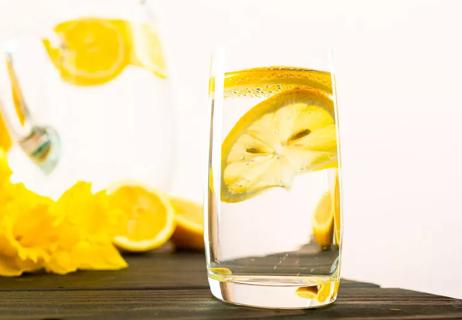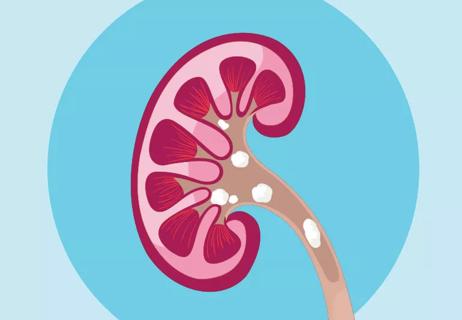Food and drink choices, plus your weight and activity level, can all play a role

It’s safe to assume that nobody wants to relive the agony that can come with passing a kidney stone. (If you’ve never had kidney stones, trust us on this: You REALLY don’t want the experience.)
Advertisement
Cleveland Clinic is a non-profit academic medical center. Advertising on our site helps support our mission. We do not endorse non-Cleveland Clinic products or services. Policy
Given that, it makes sense to do whatever you can to keep those crystals from ever forming in your kidneys and making a painful exit.
So, here are some ways to avoid kidney stones, courtesy of urologist Fabrice Henry, MD.
One out of 10 people will get a kidney stone sometime during their life. Kidney stones are caused by minerals building up in your urine and glomming together to form crystals. (Fun fact: The largest kidney stone ever recorded was about the size of a grapefruit.)
Decisions you make every day help determine whether you’re one of the unlucky 10% with a kidney stone story, says Dr. Henry. Here’s how you can avoid joining that club.
Staying hydrated is the No. 1 thing you can do to prevent kidney stones!
Your kidneys use urine to unload waste products from your body. Every time you pee, you’re flushing your system to get rid of excess vitamins, minerals, acids and other items that need to be cleared out.
When you get dehydrated, your body produces less urine. Letting your inner tank go empty allows waste products to build up in your kidneys — increasing the likelihood that they’ll bond together to create kidney stones.
“When you don’t drink enough, your urine becomes more concentrated, and you’re more likely to develop stones,” explains Dr. Henry.
Advertisement
Most people need 10 to 12 cups of fluid a day to stay properly hydrated, he adds. Your needs may rise if you’re sweating more due to physical activity or being in warmer temperatures.
As the Earth’s temperature rises, researchers predict that global warming will increase the risks of dehydration and kidney stone disease.
So, how do you know if you’re properly hydrated? You can usually find the answer in the restroom. Most people pee out about a half-gallon (2 liters) of urine during the day over seven bathroom breaks.
Pee that’s darker in color typically indicates more concentrated urine and potential dehydration. Ideally, urine should be a pale yellow color similar to straw. (Learn more about what urine color means.)
Kidney stone development has also been linked to what people eat, says Dr. Henry. So, what should (or should not) be on your plate? Here are a few suggestions.
Excess sodium in your diet can lead to more calcium in your urine. That’s an issue given that the most common types of kidney stones form with calcium, notes Dr. Henry.
Tips to limit sodium in your diet include:
High fructose corn syrup is a sweetener that pops up on many food products’ ingredient lists. Getting too much of it in your diet has been connected to a long list of health issues, including kidney stones.
The best way to avoid high fructose corn syrup is to feature more natural, unprocessed foods in your meals, says Dr. Henry.
Citrus fruits such as lemons, oranges and melons are high in citric acid, which helps block the formation of kidney stones by binding to calcium. Citric acid can even help break down any stones or crystallized masses that have come together.
Beef, poultry, pork, eggs and fish are all animal proteins that can trigger the formation of uric acid kidney stones. It’s best to limit these in your diet if you’re prone to kidney stones, shares Dr. Henry.
If you have a history of kidney stones, it’s often best to limit foods high in a natural compound known as oxalate. This includes items such as certain greens, vegetables, beans and nuts.
Talk to your healthcare provider to determine if you need to make this adjustment.
Wait? Isn’t calcium a big part of kidney stone formation? The answer to that is YES — but that doesn’t mean you should cut back on calcium-rich foods. In fact, not getting enough calcium in your diet can contribute to the formation of kidney stones, says Dr. Henry.
Advertisement
The one caveat? There’s research indicating that taking calcium supplements (particularly without a meal) may increase kidney stone risk.
Numerous studies show that obesity increases your risk of kidney stones. The association between higher body fat and kidney stone risk exists independent of factors such as sex, age, smoking status or level of physical activity, too.
It’s believed that the world’s growing obesity epidemic may be contributing to recent increases in kidney stones, even among people with usually low rates of getting them. (That group includes young children.)
Obesity also brings an elevated risk of health issues, such as diabetes, high blood pressure (hypertension) and high cholesterol (hyperlipidemia) — all of which can contribute to kidney stone formation.
“With the declining health of the public, one of the symptoms is an increase in kidney stones,” reiterates Dr. Henry.
It seems you might be able to run, walk, bike or swim away from kidney stones.
A 2024 study found that “weekend warriors” and active individuals who exercised between 30 to 60 minutes a day had a lower prevalence of kidney stones than those who were inactive. (Working out regularly can also help you maintain a healthy weight.)
Advertisement
Medications may contribute to the development of kidney stones, notes Dr. Henry. Talk to your healthcare provider about different options if you get kidney stones while on a certain medication.
Advertisement
Learn more about our editorial process.
Advertisement

Say goodbye to kidney stone pain with these 7 expert diet tips

With warmer temps and increased physical activity, winter stones can begin to travel

Mindful eating, physical activity and quality sleep are just a few ways to protect your kidney function

Eating advice varies based on disease progression, but you should always monitor your intake of sodium, protein and potassium

Overweight and obesity increase your CKD risk, and may speed disease progression in people who have the condition

Tracking your weight, swelling, blood pressure and more may help you — and your provider — figure out what’s driving secondary FSGS

Regular visits with your nephrologist, at-home testing and symptom tracking ensure you’re doing all you can to preserve kidney function

Testing can both reveal the likelihood that you’ll pass on complement 3 glomerulopathy and identify possible treatments

Start having sex about 72 hours before ovulation, then at least every other day during your fertile window

Attachment theory suggests that your earliest relationships shape connections throughout your life

It isn’t a recognized mental health disorder, but research shows that problematic social media use can negatively affect your mental health, self-esteem and sleep